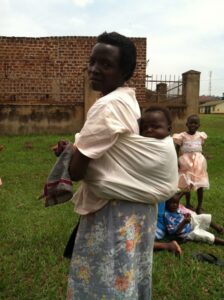International Women’s Day: What I Celebrate
By Taroub Harb Faramand, MD, MPH on March 6, 2014

March 8th marks International Women’s Day, and it offers an excellent opportunity to reflect on contributions and progress made to improve the lives of women and girls in the past year, identify where inequalities still prevent women and girls from realizing their full potential, and advocate for further changes to increase equal opportunities for women and girls.
I have spent my entire career working to help women, men, boys and girls have opportunities to live healthy lives and to achieve what they aspire for: through studying medicine, working as a physician and a clinician in refugee camps, leading global health projects and now as the founder and President of WI-HER LLC (Women Influencing Health, Education, and Rule of Law) and senior gender technical advisor on the USAID Applying Science to Strengthen and Improve Systems (ASSIST) Project. I look back on the past year and a half of the USAID ASSIST project and how we have worked to improve the lives of women and girls with pride and excitement. In close partnership with our field offices, we have begun to spark change and improve health outcomes in many countries and communities.
Our approach involves systematically identifying and analyzing gender-related gaps in outcomes and norms that influence risk factors, access to care, care-seeking behavior and equality of treatment among target beneficiaries, and addressing those gaps and norms in concert to generate shifts in thinking at the individual, household, and community levels. The USAID ASSIST Project targets women specifically in many interventions, which aim to improve the health of women, girls and their families.
In Ukraine, the project works to decrease alcohol and tobacco use among pregnant women, to improve their health and the health of their babies. In Uganda, we are working to improve the quality, accessibility and utilization of HIV services by women in the antenatal and postnatal periods, affected children, and male partners. We are also evaluating how to improve safe male circumcision services by engaging female partners. In Tanzania, we are working to improve the quality of antenatal care (ANC), to improve maternal health and newborn health.
In Botswana and India, the ASSIST project works specifically to improve maternal survival rates through quality improvement interventions throughout the countries. In Malawi and Zambia we are working to improve nutrition programs for HIV patients, especially women and children. In Mali and Niger, our project works to empower women through family planning service delivery. Also in Uganda, we are addressing issues of gender-based violence and other gender gaps to improve services for orphaned and vulnerable boys and girls.
In addition to specifically targeting women, the ASSIST project collects and analyzes sex-disaggregated data, which also directly benefits women and girls. In Georgia, the ASSIST project’s non-communicable disease intervention analyzes different risk factors for males and females and targets interventions to respond to the different risk factors of men and women, which equates to improved quality of care for both men and women.
But empowering women and girls goes beyond providing services directly to women and addressing inequalities cannot be successful without involving men and boys. Gender is relational, and without working to transform traditional gender roles of men and boys, we will not fully be able to empower women and to achieve improved health outcomes for women, men, boys and girls. This is why, in addition to working directly with women, we are also engaging men. By engaging male partners to attend ANC visits and in PMTCT programming, the project works to involve fathers in maternal health and parenting, which has both health and relationship benefits for women. Involving men in PMTCT services has been shown to improve retention of mother baby pairs, and by offering HIV testing for male partners at ANC and PMTCT appointments, the USAID ASSIST project empowers both men and women to know their HIV status and enter into treatment programs.
I am proud of what we have been able to accomplish in the past year and a half through the ASSIST project to improve the health outcomes and lives of women and their families. I look forward with even greater excitement to this coming year, knowing that, with the strong commitment of our field offices, senior leadership and all staff to integrate gender across the USAID ASSIST Project, we will capture lessons learned and best practices to integrate gender into improvement, and we will continue our deep commitment to improve health outcomes for women, men, boys, and girls.